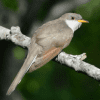 By Jim Stevenson
By Jim Stevenson
By First of all, there may be a bird-producing frontal system this Saturday, and it might provide some of the tough-to-see late migrants like various Empidonax flycatchers, Mourning and Canada Warblers and other mid-May specialties. I am considering changing the Big Thicket venue for Saturday to a coastal one, but would welcome feedback from anyone interested in either. I’m a man of the people…
Second, I am canceling the Arizona trip because of an apparent lack of interest this year (never happened before!). We’ll have it again next August, right after the middle of the month, so plan on it. And don’t forget, we will be “doing” California next summer, taking a year off from Alaska.
OK, this article is on the various “other” land bird orders besides songbirds. You might notice how the names of bird orders end in …iformes, and also, the names of families of birds end in …idea. Enjoy!
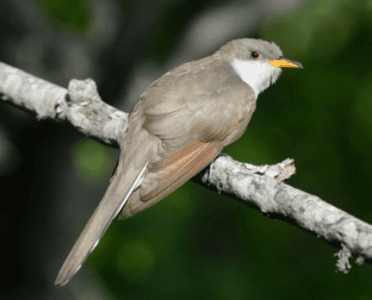
The vast majority of land birds belong to the massive order, Passeriformes, called the songbirds. However, there are a few other orders generally more primitive than songbirds and this PDF concentrates on them. Some of them do sing and a few have odd toe arrangements, but you are probably familiar with many of them. This order is the Cuculiformes and includes cuckoos, anis and the roadrunners. They have a curious, reversible third toe that makes their feet semizygodactyl and somewhat odd behavior. Cuckoos, for instance, sit quietly on limbs and slowly move their head side to side, presumably looking for food.
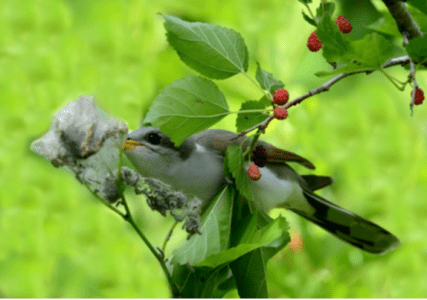
One of the favorite foods of the cuckoos is the nests of tent caterpillars, often called other, vernacular names (including some I can’t put in print). This one may be getting a balanced diet, though, as it seems mulberries are quite handy. The two cuckoos we see in the migration are summer residents in North America, passing through the Gulf coastal region in late spring.
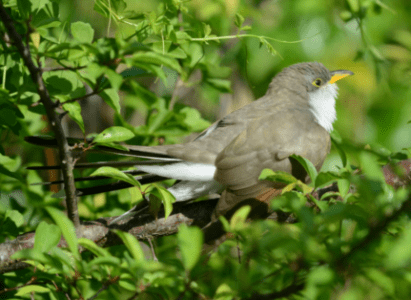
Cuckoos are odd (should I just say “unique”?) in several other ways. One is their habit of sitting out in the sun for extended lengths of time, seemingly in some drug-induced trance. Another peculiarity that I unearthed in my graduate work was that while the vast majority of birds arrive at the Gulf Coast the first day of a fall cold front, cuckoos don’t arrive until the second day. Curiously, too, while the other fall migrants are heavily laden with fat reserves at that time, cuckoos have virtually no fat then.
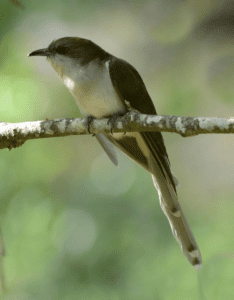
Similar to the Yellow-billed, and often overlooked, is the Black-billed Cuckoo. As you can see, they have a red eyering, smaller white tail spots and no reddish in the wing. The name also implies their nomenclatural difference from yellow-bills, and each field mark may be used in different circumstances. For instance, and this applies to many bird identifications, if the cuckoo is in flight, use the presence or absence of red in the wings.
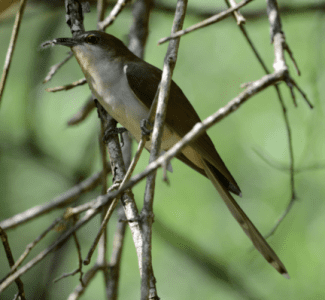
This black-bill was often seen this spring, hanging around the Smith Oaks parking lot. Here it snags a tent caterpillar and seems oblivious to human intervention. The nature of black-bills is to hide rather than flee, actually a behavioral difference which often separates them from yellow-bills. This originally led ornithologists to believe they were far more rare than they really were, with some older sources suggesting there were 100 times as many yellow-bills! However, the late, great Herbert Stoddard found, from picking up dead birds at the WCTV tower, that the ratio was more like ten to one. Dr. Stoddard’s work taught us a great deal about nocturnal bird migration, as well as salvaging tens of thousands of specimens for scientific collections around the World.
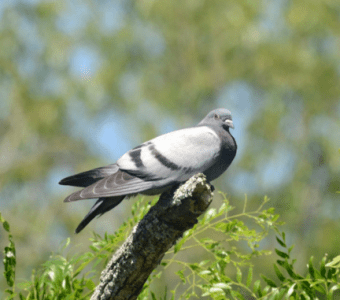
Rock Pigeons aka rock “doves” order Columbiformes are familiar to all of us, though they are more normally seen in cities, rather than this bird on a trail at Brazos Bend State Park yesterday. This bird shows fairly close the original color and pattern of the Rock Pigeon, though they were selectively bred to make all kinds of bizarre hues. When I was a child, this species was not even considered a wild bird, and could not be “counted,” but they were eventually recognized, presumably because it was felt they could survive without the presence of man. Or woman.
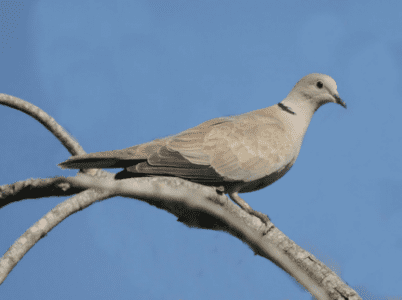
Eurasian Collared-doves are, of course, transplants from the Old World. Others of this group have emigrated from Mexico, making populations of this family constantly in flux. Regrettably, Inca Doves seem on a fast track to oblivion, perhaps with their sidekicks, the Ground Doves. As a group, doves and pigeons have large bodies, small heads and are not especially migratory.
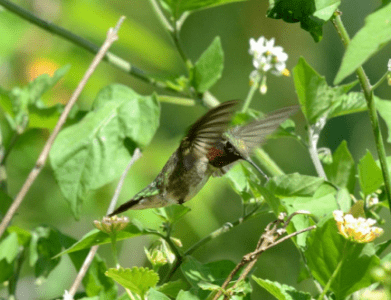
While there’re over a dozen hummingbirds (order Apodiformes) out West and 300 in the New World Tropics, the East only has one – the Ruby-throated Hummingbird. This species graces our flower gardens in the migration from March through May, then disappears further north until after the breeding season. They are so numerous as circum- Gulf fall migrants that the City of Rockport has an entire festival centered around them! We do occasionally get stray western species of hummers in the East, often in the winter. I personally have serious doubts about whether it is in their best interests to lure them here in winter with feeders, rather than allowing them to head to the Tropics, where sudden cold fronts won’t kill them. Is it worth the risk?
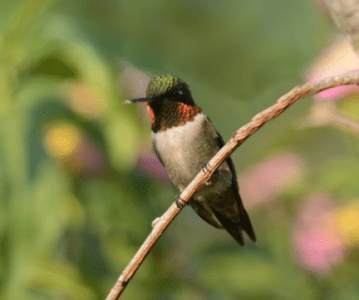
Most hummer males are equipped with a gorget for courtship and it is often red. Rival males also use this color to “threaten” each other and gain the rights to their favorite lady. Hummingbirds are, of course, our smallest birds, with the very smallest being the Bee and the Bumblebee Hummingbirds of Cuba and Mexico, respectively. Our ruby-throat is about an average-sized hummer.
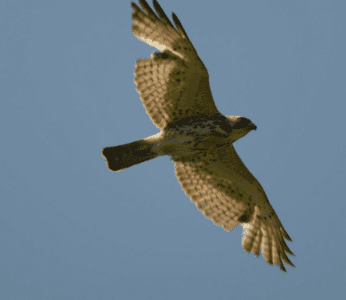
Last Friday, with the winds screaming out of the North (with the latest onslaught of wicked, late season cold fronts), Broad-winged Hawks that normally pass over the Island (off the Gulf) too high to be seen were only about 200 yards up. This immature sailed over near Laffite’s Cove and is probably way inland by now. We rarely get the similar Red-shouldered Hawk on the Island, but just FYI, note the heavy “mustache” on the broad-wing’s chin. The order of birds of prey is Falconiformes, and there are several families within it. A few are found below:
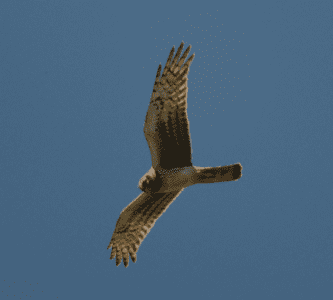
Harriers are long-winged hawks that seem to float effortlessly over marshes and grass- lands in search of their favorite food – rats. They are notoriously hard to photograph as they always seem to sail off in another direction. Males are gray and female&immtures brown. This is a changing female, as she is gaining her ventral streaking that identifies her as a gal. A few actually nest along the Texas Coast while the vast majority of our wintering birds depart further north for the summer.
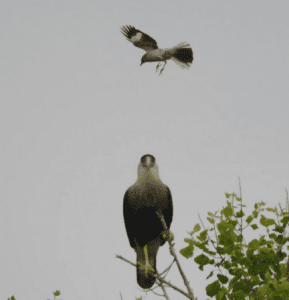
This caracara is drawing a lot of attention from a mockingbird that is likely nesting in a close location. While the caracara pretty much ignored the protesting bird, mockingbirds do bother other animals like dogs and cats, and the white flash colors in the wings and tail play well with the scolding calls. This pair of caracaras apparently nests on the exit road at San Bernard NWR and is more tame than many of its species on the UTC.
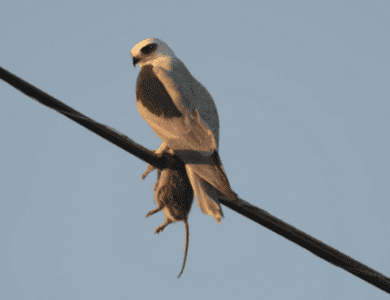
White-tailed Kites are residents along the Texas Coast but are scarce elsewhere in the US. They are confirmed rodent eaters and are currently nesting just down the road from my house. Here the male pauses to reflect on my presence before taking this Cotton Rat (Sigmodon hispidus) to his betrothed
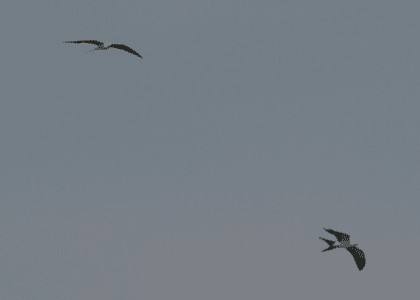
Many of you remember the two Swallow-tailed Kites that delighted Alan Murphy and me off my skydeck. Well, on 23 April, I found this “pair” over the Texas City Dike, before they finally drifted off to the North. This species nests east of Houston and is increasing in the Deep South. Curiously, they are one of the few summering species that can be seen as early as (late) February, and their fall run virtually amounts to late summer.
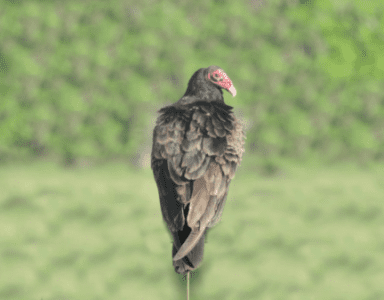
New World Vultures aren’t considered Falconiformes anymore, as our classification system is constantly in flux. The brown body and red head denotes the Turkey Vulture, as the Black Vulture is, well, black. Curiously, I have seen only one TV nest and one BV nest, and am wondering how many of you have actually seen a vulture nest. My BV nest was in a cave and the TV nest was in a silo. Neither were your typical homesteads.
”]
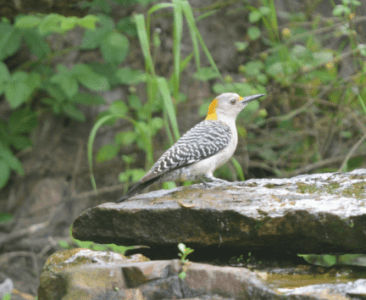
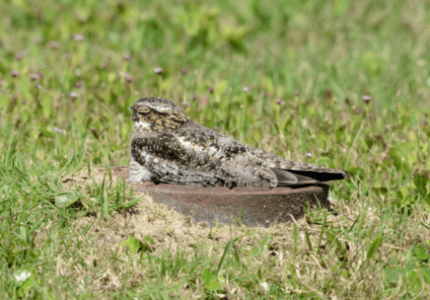
The order Caprimulgiformes is the goatsuckers, or in the Old World, “nightjars.” The name goatsuckers came from the way certain of the species hung out in goat stalls and the ensuing uneasiness caused the goats to not give as much milk. Of course, 2 plus 2 became 5 as the farmers assumed (there’s that word) that their goats had been milked (which would be “utterly” impossible).

 Posted in
Posted in 
























